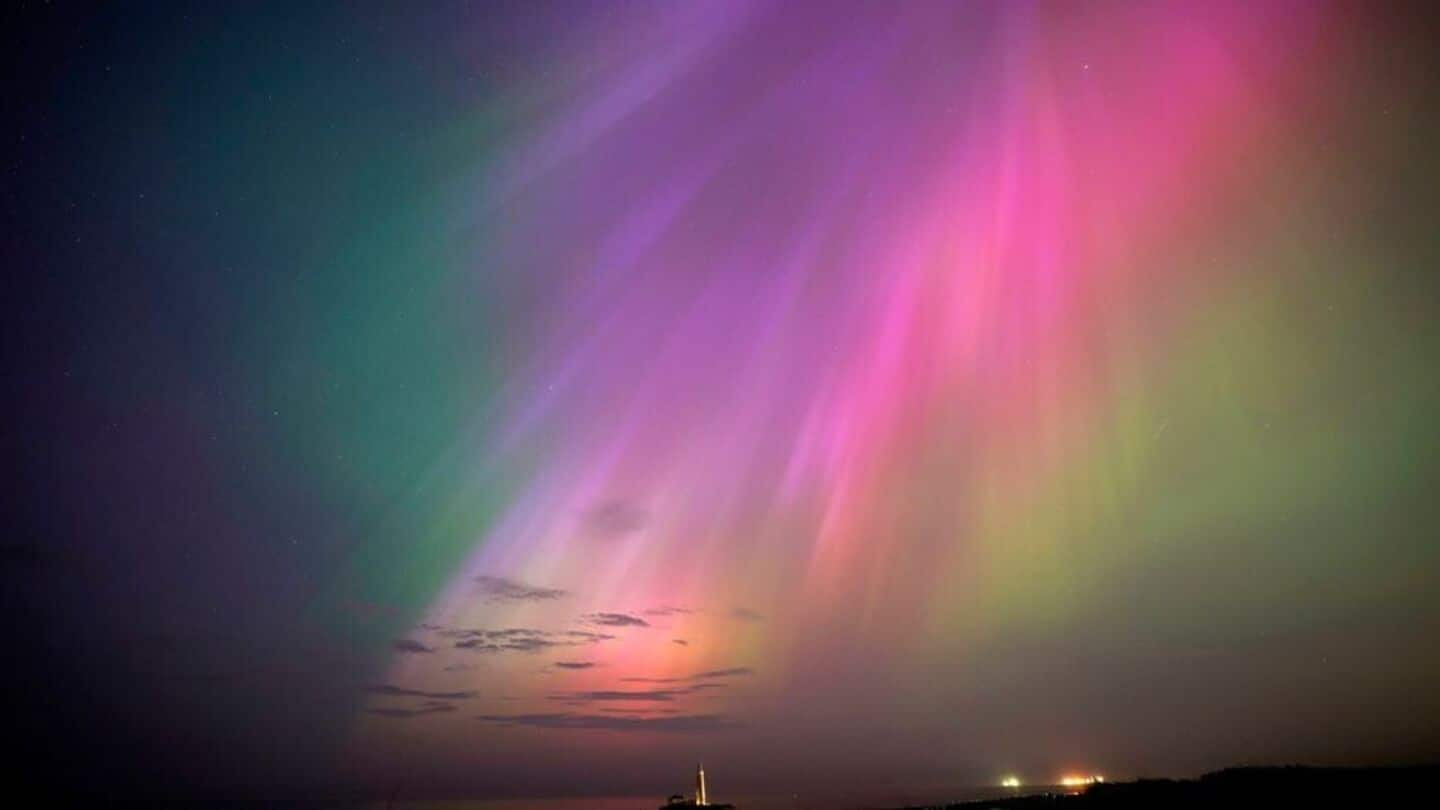
Rare double solar eruption to trigger auroras: How to watch
What's the story
A rare double solar eruption, which took place on April 12, 13, is likely to affect Earth's magnetic field.
The NOAA Space Weather Prediction Center (SWPC) has issued a geomagnetic storm watch for April 16. This could lead to an amazing display of northern lights.
The coronal mass ejections (CMEs) from this solar activity are expected to cause G2-class geomagnetic storm conditions.
This will make auroras visible across several regions including Canada and US states like New York and Idaho.
Solar storms
CMEs to impact Earth's magnetic field
CMEs are massive clouds of charged solar particles that can disrupt Earth's magnetic field.
This can trigger geomagnetic storms, possibly causing spectacular aurora displays beyond their usual high-latitude range.
Space weather physicist Tamitha Skov wrote on X, "These solar storms will likely travel slowly, but they are dense and thus could pack a decent punch!"
She added that while they're awaiting coronagraph data to run models, the impact could be late on April 15 or early on April 16.
Prediction challenges
Timing of CME impacts remains uncertain
The exact timing of CME impacts is hard to predict as space weather is notoriously unpredictable.
Even if a CME does hit Earth, the impact on auroras depends on how the magnetic field within the CME is aligned.
If it connects with Earth's magnetosphere, it could lead to stunning northern lights displays. But if Earth's magnetosphere "closes the door" on CME, there will be no auroras.